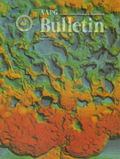Difference between revisions of "Smear-gouge ratio"
Jump to navigation
Jump to search
Cwhitehurst (talk | contribs) |
Cwhitehurst (talk | contribs) |
||
| Line 15: | Line 15: | ||
}} | }} | ||
| − | Smear-gouge ratio is the ratio of sand to shale that has moved past some critical portion of the fault plane.<ref>Skerlec, G. M., 1996, Risking fault seal in the Gulf Coast (abs.): AAPG Annual Convention Program and Abstracts, v. 5, p. A131.</ref> Although not simply relatable to the shale gouge ratio, the smear gouge ratio varies in an inverse manner; i.e., high shale gouge ratio corresponds to low smear gouge ratio and vice versa. | + | Smear-gouge ratio is the ratio of sand to [[shale]] that has moved past some critical portion of the fault plane.<ref>Skerlec, G. M., 1996, Risking fault seal in the Gulf Coast (abs.): AAPG Annual Convention Program and Abstracts, v. 5, p. A131.</ref> Although not simply relatable to the shale gouge ratio, the smear gouge ratio varies in an inverse manner; i.e., high shale gouge ratio corresponds to low smear gouge ratio and vice versa. |
Both ratios are commonly called SGR. | Both ratios are commonly called SGR. | ||
Latest revision as of 13:49, 18 March 2019
| Quantitative Fault Seal Prediction | |

| |
| Series | AAPG Bulletin, June 1997 |
|---|---|
| Author | G. Yielding, B. Freeman, and D. T. Needham |
| Link | Web page |
Smear-gouge ratio is the ratio of sand to shale that has moved past some critical portion of the fault plane.[1] Although not simply relatable to the shale gouge ratio, the smear gouge ratio varies in an inverse manner; i.e., high shale gouge ratio corresponds to low smear gouge ratio and vice versa.
Both ratios are commonly called SGR.
References
- ↑ Skerlec, G. M., 1996, Risking fault seal in the Gulf Coast (abs.): AAPG Annual Convention Program and Abstracts, v. 5, p. A131.